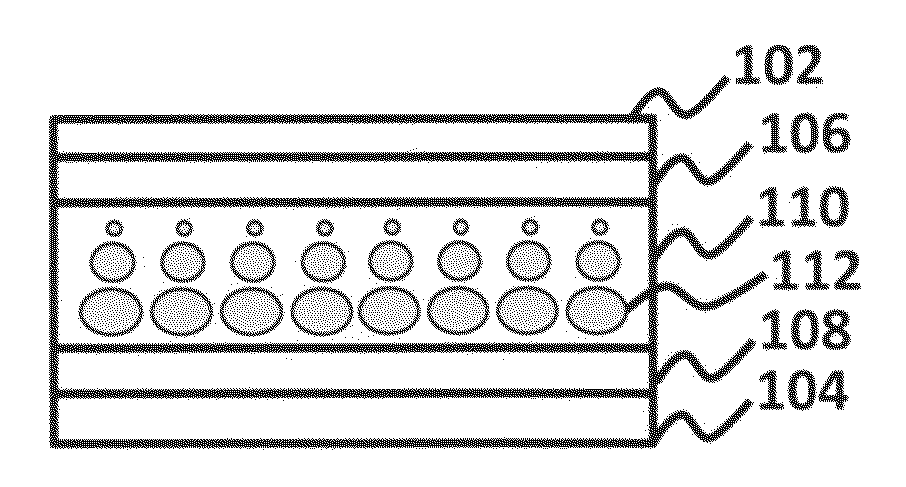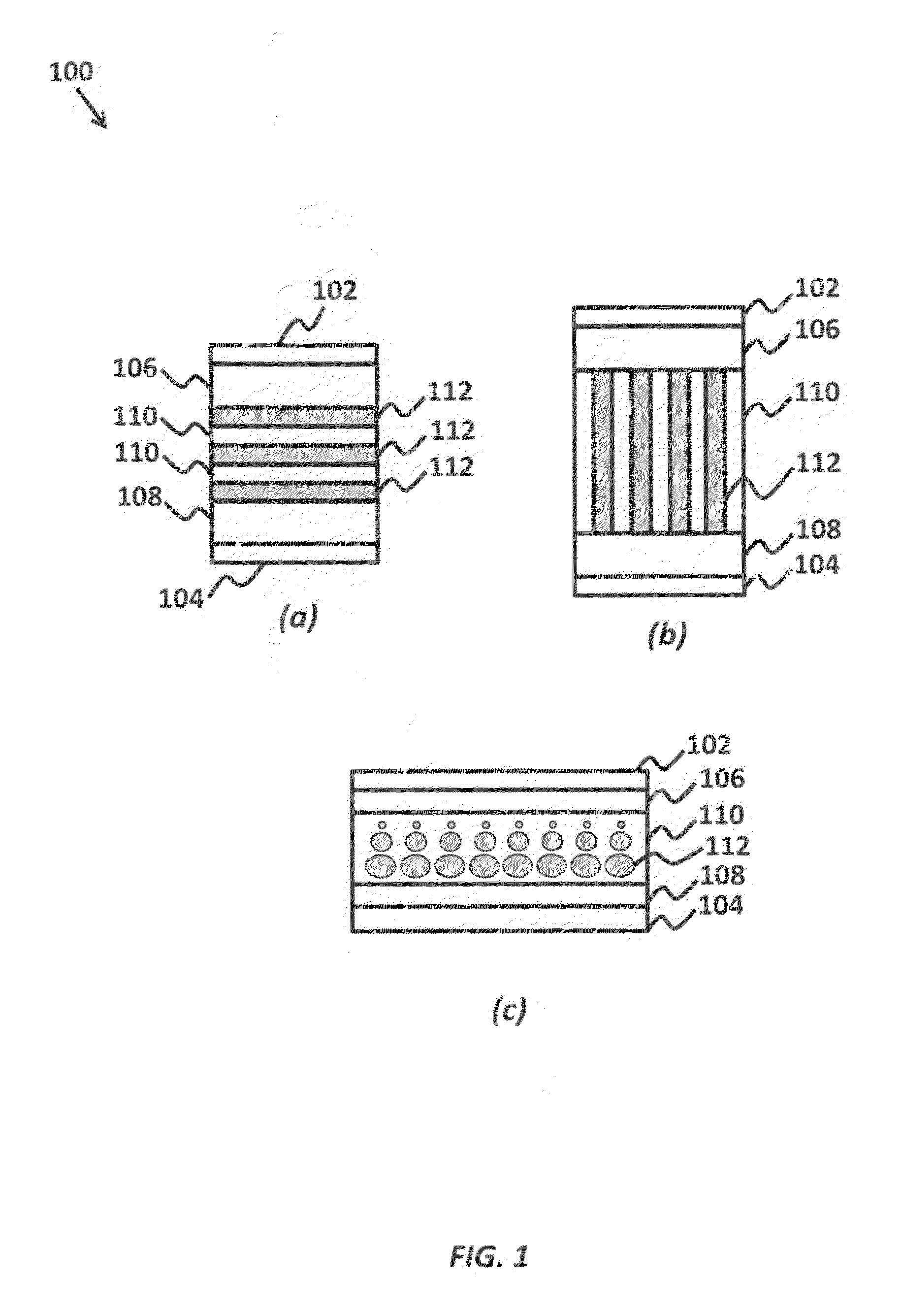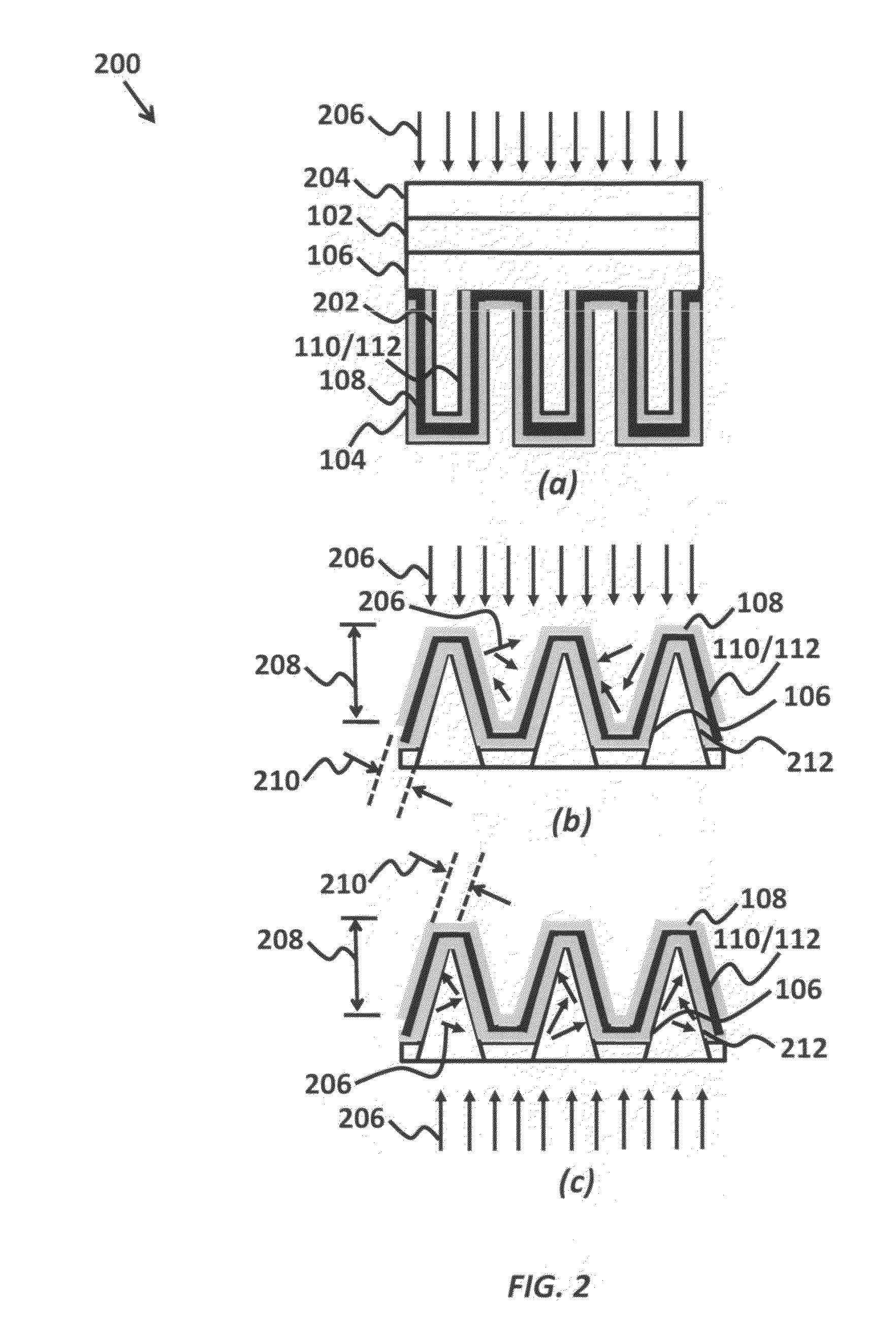Quantum confinement solar cell fabricated by atomic layer deposition
a solar cell and quantum confinement technology, applied in the field of quantum confinement solar cells, can solve the problems of three-dimensional control of tolerances and the implementation of such structures
- Summary
- Abstract
- Description
- Claims
- Application Information
AI Technical Summary
Benefits of technology
Problems solved by technology
Method used
Image
Examples
Embodiment Construction
[0023]Quantum confinement (QC) structures such as quantum wells, quantum wires, quantum tubes and quantum dots possess several attractive characteristics that can benefit solar cell performance. Due to quantum mechanical effects on confined charge carriers, the bandgap of such structures can be tuned by controlling the confinement dimension. Additionally, the ability to produce multiple excited charge carriers from a single high-energy photon is exhibited in QCs, according to the current invention. This aspect allows a solar cell benefiting from QC structures to avoid the Shockley-Quaissar limit. Furthermore, mini-band structures formed by superlattices of QCs allow for efficient charge transport through a device.
[0024]The current invention uses atomic layer deposition (ALD) to fabricate QC structures. ALD is a thin-film fabrication technique based on a modified metalorganic chemical vapor deposition (MOCVD) process, where precursor chemicals are introduced sequentially into a react...
PUM
| Property | Measurement | Unit |
|---|---|---|
| Bohr exciton radius | aaaaa | aaaaa |
| diameter | aaaaa | aaaaa |
| thicknesses | aaaaa | aaaaa |
Abstract
Description
Claims
Application Information
 Login to View More
Login to View More - R&D
- Intellectual Property
- Life Sciences
- Materials
- Tech Scout
- Unparalleled Data Quality
- Higher Quality Content
- 60% Fewer Hallucinations
Browse by: Latest US Patents, China's latest patents, Technical Efficacy Thesaurus, Application Domain, Technology Topic, Popular Technical Reports.
© 2025 PatSnap. All rights reserved.Legal|Privacy policy|Modern Slavery Act Transparency Statement|Sitemap|About US| Contact US: help@patsnap.com



